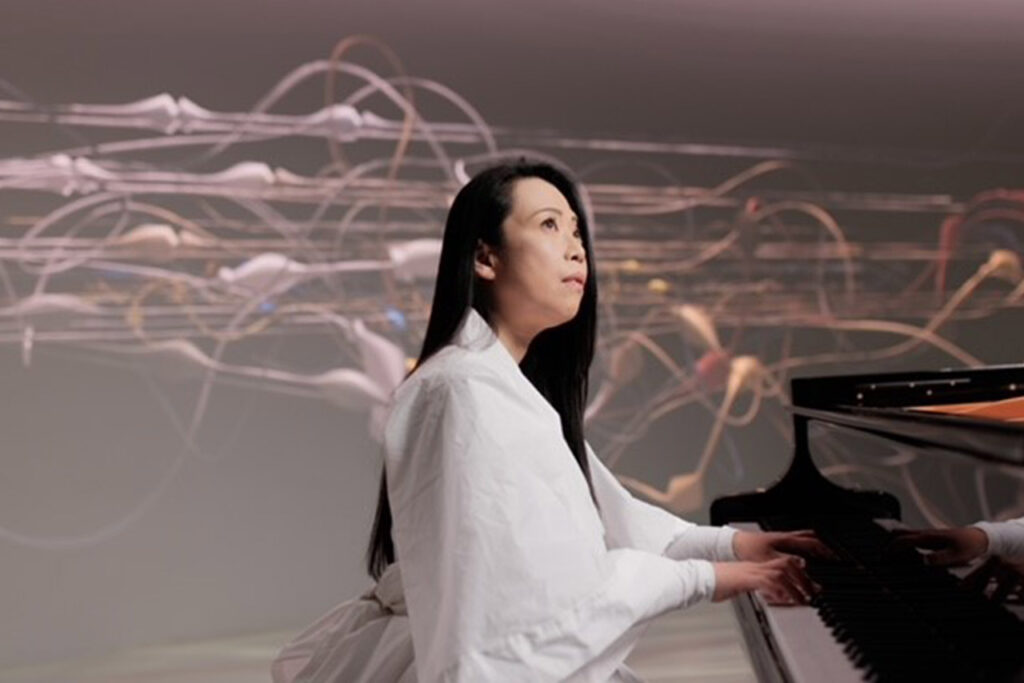General-Anzeiger Bonn by Thomas Kliemann, Editor Feuilleton
He was probably not really in a good mood when he sat down at the grand piano in the Cologne Opera on January 24, 1975. Jazz pianist Keith Jarrett, then 29, had arrived from Switzerland early that morning in a rickety R4. On stage, instead of the promised Bösendorfer 290 Imperial concert grand, there was an out-of-tune baby grand from the rehearsal room. Dinner arrived much too late. Jarrett – heavily overtired – had actually lost the desire to perform. But then he let himself be persuaded by the ambitious organizer Vera Brandes (18).
The concert – 66 minutes of free improvisation – became a milestone in jazz history and a great moment for all of the 1400 listeners in Cologne. That it was recorded at all – for internal purposes – is a miracle. The recording, released by ECM, became a hit, the best-selling jazz solo record, the best-selling piano solo record. Millions and millions of fans love it, follow the flow of the music as if in a trance, know when the master, sighed, hummed or groaned.
A frozen moment of bliss. Of course, one is skeptical at first when someone wants to replay this masterpiece born of spontaneity, note for note, pause for pause. To force the “Köln Concert”, this manifesto of freedom, into a framework of notes? Unthinkable!
Japanese pianist Maki Namekawa, wife of conductor Dennis Russell Davies, has taken on the concerto, meticulously worked through it, and discussed the project of a revival with Jarrett, now 78. “I told Keith that I was not a jazz pianist, but that I wondered how my interpretation of ‘The Köln Concert’ sounded to him. He smiled and simply replied, ‘The Köln Concert is not jazz.'” Jarrett gave his blessing.
Be that as it may, on the stage of the completely sold-out Pantheon – with “emergency seats offered behind a curtain and in the lounge, there was no ruinous baby grand piano, but a Steinway magnificent specimen, Model D, which, at 274 centimeters long, is one of the company’s premium instruments. This information is important. Because the interpretation that Namekawa presented is probably from a purely technical viewpoint what Jarrett had hoped for in Cologne. All reservations, all skepticism about the revitalization of the “Cologne Concert” evaporate after the first sounds. Physically very restrained, almost humble, but with full access and extensive use of the pedal (with Jarrett in Cologne, the pedal system had occasionally snagged), the pianist went to work. In front of an absolutely spellbound and concentrated listening audience – a single cough was counted – she resurrected this masterpiece – in an unbelievable tonal brilliance and a precision that put Jarrett’s improvisational ops note for note almost unadulterated into the room.
The “Cologne Concert”, already performed by Namekawa in the Philharmonie in Paris and at the Ars Electronica Festival in Linz, illuminates the work in a new way, so to speak, letting the flowing passages, the motif developments and changes, the dramatic, even erratic tempo intensifications, the thoughtful, contemplative sequences appear very vividly, revealing -even more strongly than the ECM recording – small weaknesses and breaks in that free 66-minute performance in Cologne. At that time it was a risky balancing act without a safety net, one senses that in retrospect. And in the Pantheon? A very special, intense, dreamlike evening.
It should also be noted that the baby grand piano in Cologne was later scrapped. Vera Brandes is still annoyed that she didn’t buy it as a souvenir or as an investment. And the Bonn grand piano? The gentlemen from Piano Rumler were already standing in front of the Pantheon, ready to bring the good, noble piece safely back to the warehouse.
September 20, 2023
https://ga.de/news/kultur-und-medien/koeln-concert-fast-wie-neu_aid-98048279
